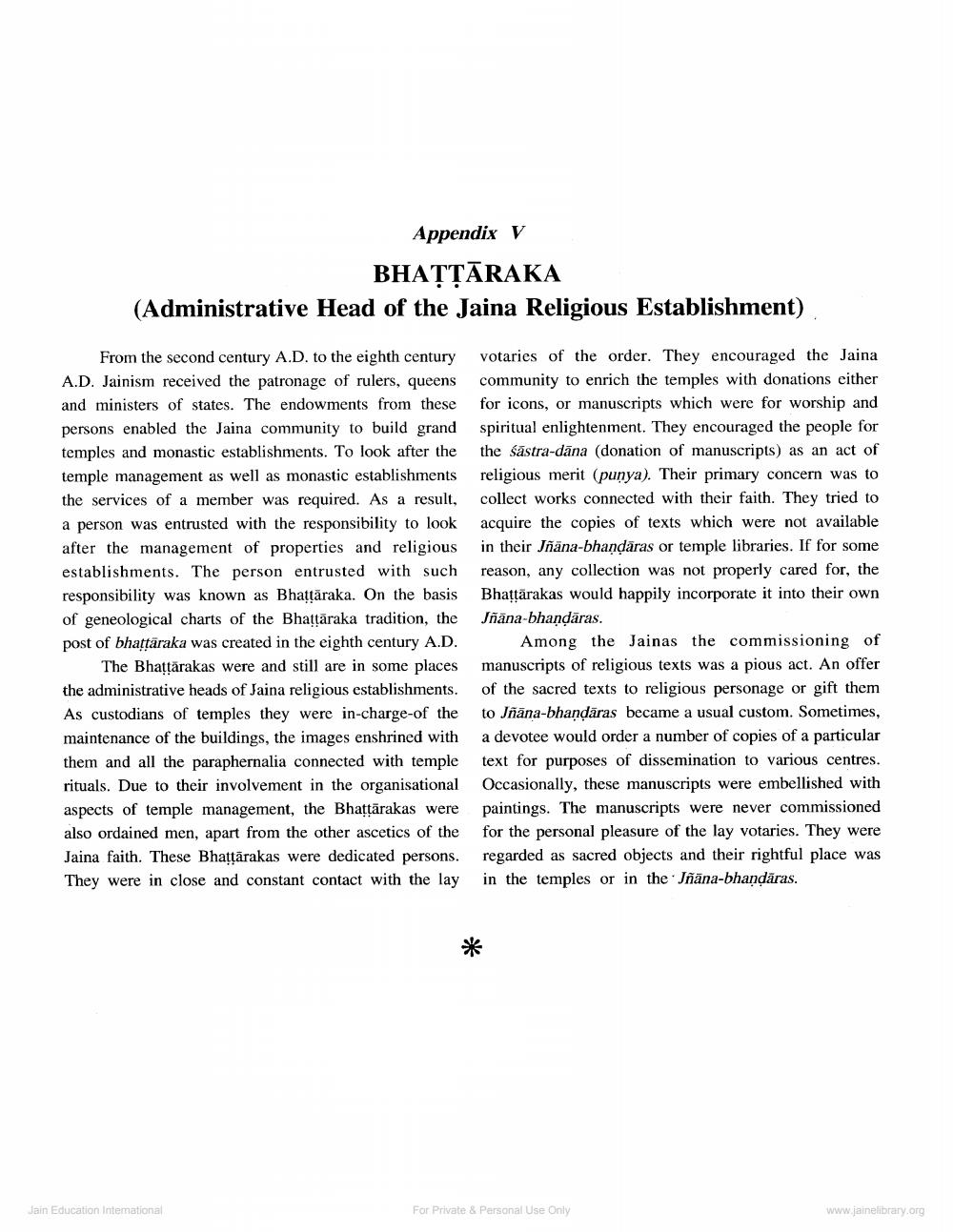________________
Appendix V
BHATTĀRAKA (Administrative Head of the Jaina Religious Establishment)
From the second century A.D. to the eighth century A.D. Jainism received the patronage of rulers, queens and ministers of states. The endowments from these persons enabled the Jaina community to build grand temples and monastic establishments. To look after the temple management as well as monastic establishments the services of a member was required. As a result, a person was entrusted with the responsibility to look after the management of properties and religious establishments. The person entrusted with such responsibility was known as Bhałțăraka. On the basis of geneological charts of the Bhattāraka tradition, the post of bhattaraka was created in the eighth century A.D.
The Bhatțărakas were and still are in some places the administrative heads of Jaina religious establishments. As custodians of temples they were in-charge of the maintenance of the buildings, the images enshrined with them and all the paraphernalia connected with temple rituals. Due to their involvement in the organisational aspects of temple management, the Bhattārakas were also ordained men, apart from the other ascetics of the Jaina faith. These Bhattārakas were dedicated persons. They were in close and constant contact with the lay
votaries of the order. They encouraged the Jaina community to enrich the temples with donations either for icons, or manuscripts which were for worship and spiritual enlightenment. They encouraged the people for the śāstra-dāna (donation of manuscripts) as an act of religious merit (punya). Their primary concern was to collect works connected with their faith. They tried to acquire the copies of texts which were not available in their Jñana-bhandāras or temple libraries. If for some reason, any collection was not properly cared for, the Bhattārakas would happily incorporate it into their own Jñana-bhandāras.
Among the Jainas the commissioning of manuscripts of religious texts was a pious act. An offer of the sacred texts to religious personage or gift them to Jñāna-bhandāras became a usual custom. Sometimes, a devotee would order a number of copies of a particular text for purposes of dissemination to various centres. Occasionally, these manuscripts were embellished with paintings. The manuscripts were never commissioned for the personal pleasure of the lay votaries. They were regarded as sacred objects and their rightful place was in the temples or in the Jñāna-bhandāras.
Jain Education Intemational
For Private & Personal Use Only
www.jainelibrary.org




